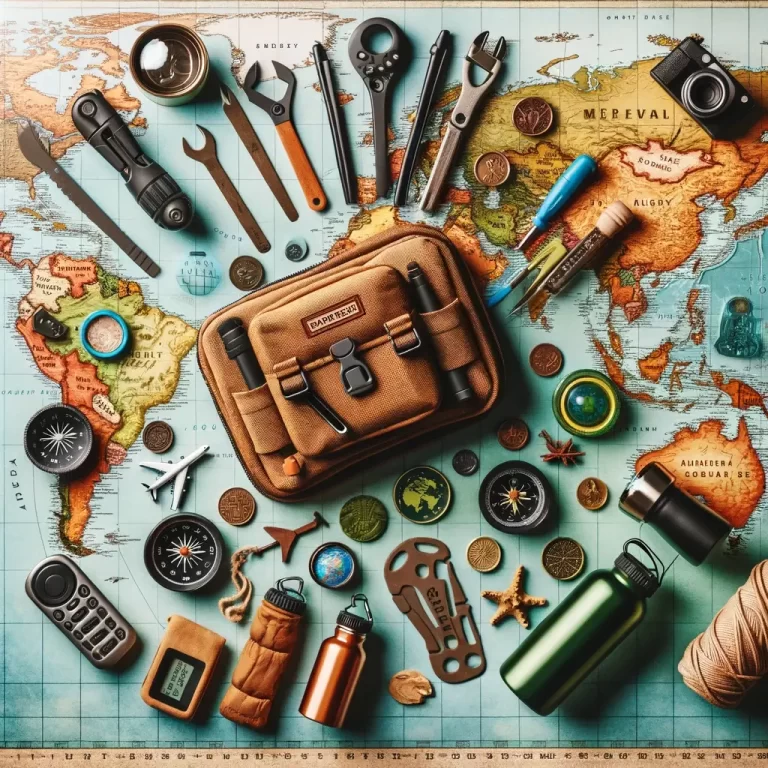Easy backpacking meals: Quick trail recipes for hikers
Embarking on a backpacking adventure offers an unrivaled sense of freedom and immersion in nature, but it also brings the practical challenge of what to eat on the trail. For millennial adventurers seeking balance between ease, cost, and the joy of eating well while exploring the wild, mastering the art of easy backpacking meals can elevate the entire experience.
With the right meal planning, even the most remote mountain peak or secluded forest can become a dining room with a view. This guide will walk you through various recipes and tips to ensure that your backpacking trip is as gratifying to your taste buds as it is to your sense of adventure.
Why choose easy and cheap backpacking meals?
When you’re miles from the nearest restaurant, your backpack becomes your kitchen. Choosing easy and cheap backpacking meals is not only a matter of convenience but also of necessity. Lightweight and cost-effective food items conserve energy for both your body and your wallet.
The key to success? Selecting foods that are lightweight, calorie-dense, and simple to prepare. A focus on these factors ensures you have enough energy to fuel your adventures without the burden of complicated cooking or heavy ingredients.
Remember, the goal is to enjoy your trip without being weighed down by expensive or cumbersome meals. With a little creativity and planning, you can dine like a king, even at the summit.
Whether you’re conquering new heights or simply unwinding by a serene lake, easy backpacking meals can transform your outdoor experience. Now, let’s explore some meal ideas that are both delicious and practical.
One-pot backpacking meals for simplicity
One-pot meals are a godsend for backpackers. They typically require minimal ingredients and cookware, making clean-up a breeze. Here’s a handful of one-pot wonders that are perfect for your next trek.
- Instant noodles with a twist – Add dehydrated vegetables and a protein like jerky for a hearty, flavorful dish.
- Quinoa superfood salad – A mix of quinoa, nuts, dried fruits, and a dash of olive oil for a dose of healthy fats and energy.
- Chili con carne – A classic that’s easy to reheat and rich in protein.
These meals prove that one-pot doesn’t mean one-flavor. With the right ingredients, you can make simple, nutritious meals that satisfy your hunger and your taste buds after a day of exploration.
Grocery store backpacking meal ideas
Not all backpacking food comes from specialty stores. You’d be surprised by the grocery store backpacking meals you can create using everyday items. Here’s what you can whip up:
For breakfast, consider instant oatmeal packets mixed with nuts and honey. Lunch might be a tortilla filled with peanut butter and banana. Dinner could be a couscous delight with sundried tomatoes and canned chicken. Snacks? Think trail mix and energy bars.
The beauty of grocery store finds is that they’re affordable and accessible. Plus, you can buy these items in bulk, saving more money and time before your trip.
With a bit of ingenuity, grocery store ingredients can turn into gourmet meals on the go. And isn’t that what adventure is all about?
Delicious homemade backpacking meals
Crafting your own backpacking meals allows for customization and ensures you’re eating foods you love. Here are some delicious homemade backpacking meals:
Start your day with homemade granola or energy bars. For lunch, a hearty lentil salad can keep you powered for hours. Come evening, a dehydrated beef stew can be both comforting and filling.
Creating these meals at home before your trip means you know exactly what’s in your food—ideal for those with dietary restrictions or preferences. Plus, the comfort of a home-cooked meal can be incredibly uplifting when you’re miles from home.
Quick trail recipes for hikers
Time is of the essence on the trail, and quick trail recipes for hikers are essential. Here are some ideas for when you want to eat well without missing a beat:
- Pre-mixed breakfast shakes loaded with protein and vitamins.
- Pita pockets stuffed with pre-cooked meats, cheeses, and greens.
- Energy bites made from oats, peanut butter, and chocolate chips.
These quick bites not only save time but also prevent a slump in your energy levels. Keep your body fueled and your mind sharp to fully enjoy the beauty around you.
How to pack food for backpacking trips
Packing food for a backpacking trip isn’t just about shoving provisions into your pack. It’s an art. You need to balance weight, space, and nutritional value. Here’s a guide to doing it right:
Prioritize calorie-dense foods that are also light, such as nuts and seeds. Vacuum-seal meals to save space and preserve them longer. And don’t forget to distribute the weight evenly in your pack to maintain comfort on the trail.
Lastly, be mindful of wildlife and pack food in bear-proof containers if necessary. It’s not just about keeping your food safe; it’s about respecting the environment and the creatures who call it home.
Now, let’s dive into some commonly asked questions to give you even more insights into the world of backpacking meals.
Additional Insights: Understanding backpacking meals
What food should I take on a backpacking trip?
On a backpacking trip, opt for foods that are lightweight, non-perishable, and high in energy. Think nuts, dried fruits, jerky, and whole-grain tortillas.
Include a mix of carbohydrates, proteins, and fats to maintain a balanced diet. And remember, taste matters just as much as nutrition – pack meals you’ll look forward to.
How much food do I need for a 5-day backpacking trip?
For a 5-day trip, aim for about 1.5 to 2.5 pounds of food per day, accounting for 2,500 to 4,500 calories, depending on your body weight and exertion level.
Plan your meals carefully to ensure you have enough to sustain your energy throughout the trip without overpacking. Accuracy in planning beats hunger on the trail every time.
What are the best easy backpacking breakfasts?
Easy backpacking breakfasts fuel the start of your day without requiring much effort. Instant oatmeal packets, freeze-dried fruits, and nut butter pouches are all excellent options.
For protein, consider pre-cooked bacon or shelf-stable packets of salmon. And don’t skimp on coffee or tea – a warm cup can do wonders for your morale in the morning.
How much does a day’s worth of backpacking food weigh?
A day’s worth of backpacking food typically weighs between 1.5 and 2.5 pounds. This can vary based on the type of foods you choose and your personal caloric needs.
Striking the right balance between nourishment and weight is crucial. Opt for high-calorie, lightweight foods to maximize efficiency and enjoyment on the trail.
In the midst of planning your meals, don’t forget to take a moment to watch this helpful video. It offers some great visual tips for packing and preparing easy backpacking meals.
As you prepare for your next outdoor adventure, remember that the meals you bring along are more than just sustenance – they’re a source of comfort and joy. With the right approach to easy backpacking meals, you can ensure that your journey is as delicious as it is memorable.
Happy trails and bon appétit!







